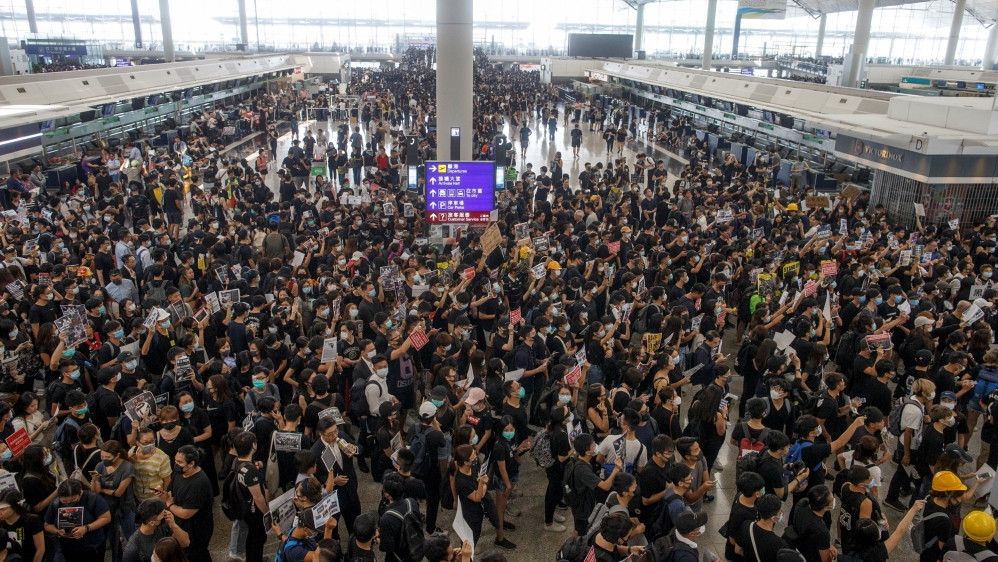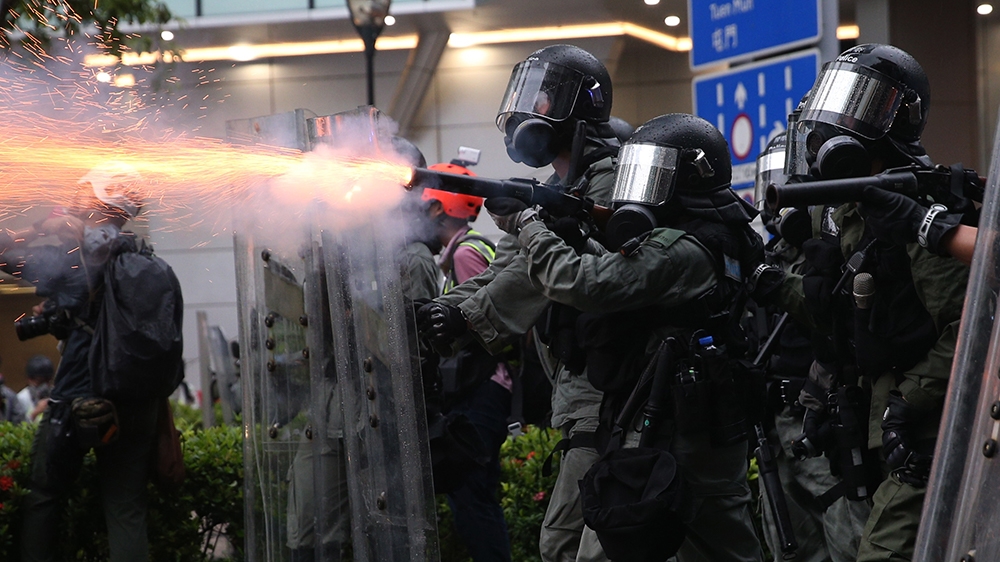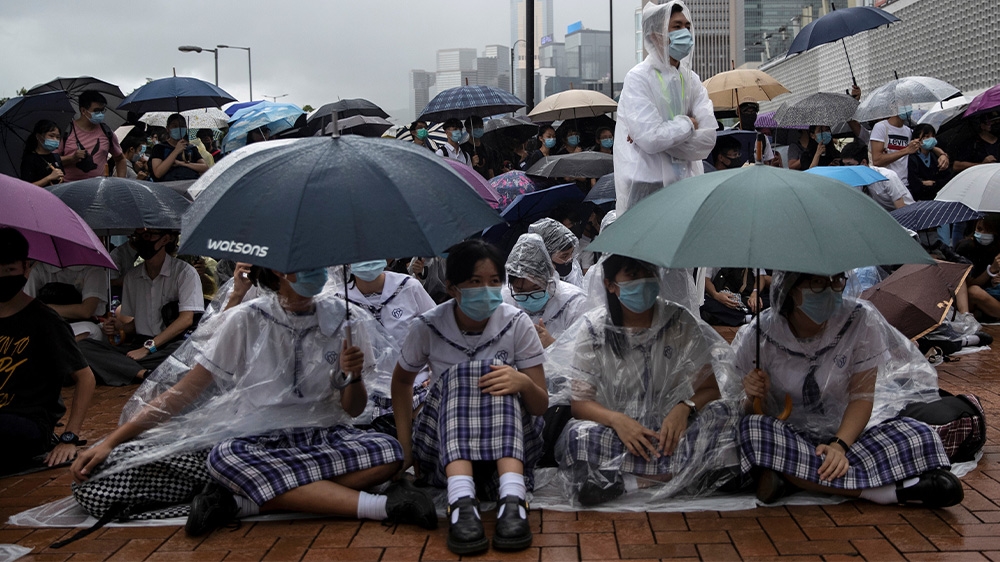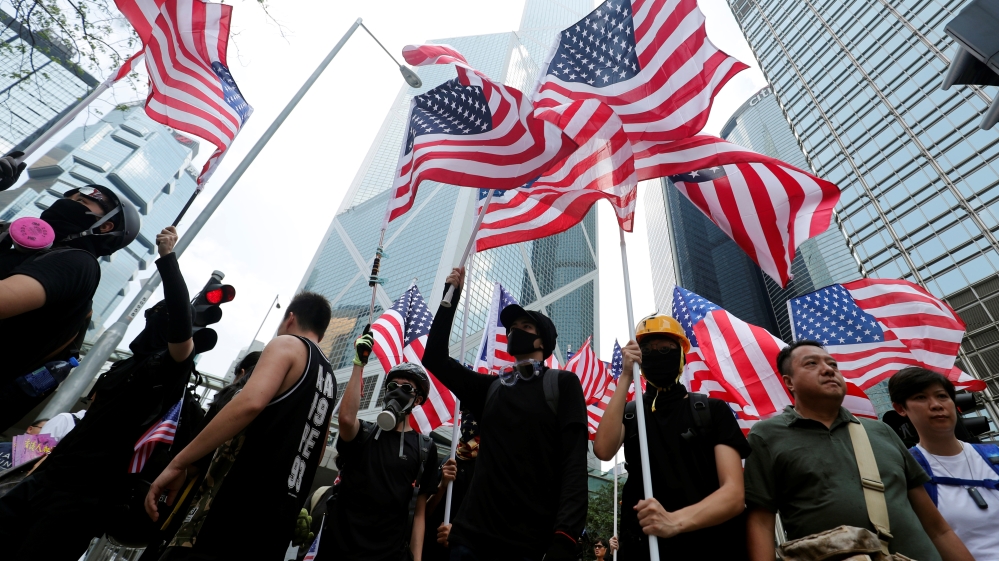Hong Kong: 100 days of huge rallies, violent clashes
Protests fuelled by opposition to an extradition bill have expanded into calls for more democracy in Chinese territory.

The pro-democracy protests that began in Hong Kong 100 days ago have plunged the former British colony into its most severe crisis since it was returned to Chinese rule in 1997.
Although the territory’s Beijing-backed administration under Chief Executive Carrie Lam has withdrawn the extradition bill that first brought millions to the streets in June, the protesters have expanded their demands and rallies have become increasingly marked by violence.
Keep reading
list of 4 itemsThe Take: Where are Hong Kong’s protesters now?
Hong Kong’s new security law comes into force amid human rights concerns
Hong Kong passes tough new national security law
Here is how events have unfolded so far:
June 9
In the territory’s biggest demonstration since 1997, more than a million people, according to organisers, marched peacefully to protest against a bill that would have allowed for the extradition of accused individuals to mainland China to face trial.
June 12
Demonstrations to coincide with the bill’s second reading at the Legislative Council, Hong Kong’s parliament, descended into violence with police involved in running battles with small groups of protesters.
Police used tear gas, rubber bullets and batons against demonstrators; dozens were injured and one protester died after falling from a roof.

June 15 and 16
Lam announced the government would suspend the bill, but stopped short of the full withdrawal demanded by its opponents.
A mass rally the next day drew some two million people, according to organisers, in a city with a population of 7.3 million.
July 1
As officials in the city marked the anniversary of Hong Kong’s return to China in 1997 – holding the event indoors for the first time – thousands of protesters again took to the streets.
Later, a group smashed their way into Legislative Council and ransacked the building.
July 21
Protesters daubed China’s office in the city with eggs and graffiti, and riot police fired tear gas and rubber bullets to disperse the crowd.
Amid a furious reaction from Beijing, masked government supporters, armed with sticks and suspected to be triad gangsters, attacked protesters in a metro station.
Protesters accused the police of being too slow to respond.
July 27 and 28
Dozens of people were arrested amid running battles between riot police and protesters.
August 3 and 4
Protesters targeted police stations in the eighth consecutive weekend of demonstrations, despite warnings from China.
August 5
A citywide strike brought daily life to a standstill as police confronted protesters for a third night.

August 12
Hong Kong’s airport, one of the busiest in the region, was forced to cancel flights after thousands of black-clad protesters occupied the departure hall.
August 15
Thousands of Chinese military personnel paraded in Shenzhen, just across the border from Hong Kong.
August 18
About 1.7 million people walked peacefully through Hong Kong’s streets to call for the extradition bill’s withdrawal.

August 25
Police used water cannon for the first time and fired warning shots after clashes in which protesters threw bricks and Molotov cocktails.
August 30
Several prominent democracy activists were arrested.
August 31
Tens of thousands of people marched in defiance of a police ban. As a hardcore group hurled petrol bombs, police fired tear gas and water cannon.

September 2
On their first day of school after the summer holidays, secondary school students boycotted classes and braved the rain to rally in the city centre.
September 4
Lam announced the extradition bill would be fully withdrawn, acceding to one of the protesters’ key demands. But activists, whose campaign had broadened to demand greater democratic freedoms, police accountability and amnesty for the more than 1,000 arrested activists, brushed off the concession.
September 8
Protesters marched to the US consulate as leading activist Joshua Wong travelled to Germany to rally support – prompting an angry reaction from China – and then to the US.

September 11
Black-clad protesters used a World Cup qualifying match with Iran to draw attention to their demands, booing China’s national anthem.
September 15
Tens of thousands of people again defied the authorities to go ahead with an unsanctioned rally at the UK consulate where they demanded the British government increase pressure on Beijing and protect the protesters.
Small groups attacked the main government complex, hurling Molotov cocktails and rocks over security barriers as police once again fired tear gas and deployed water cannon.